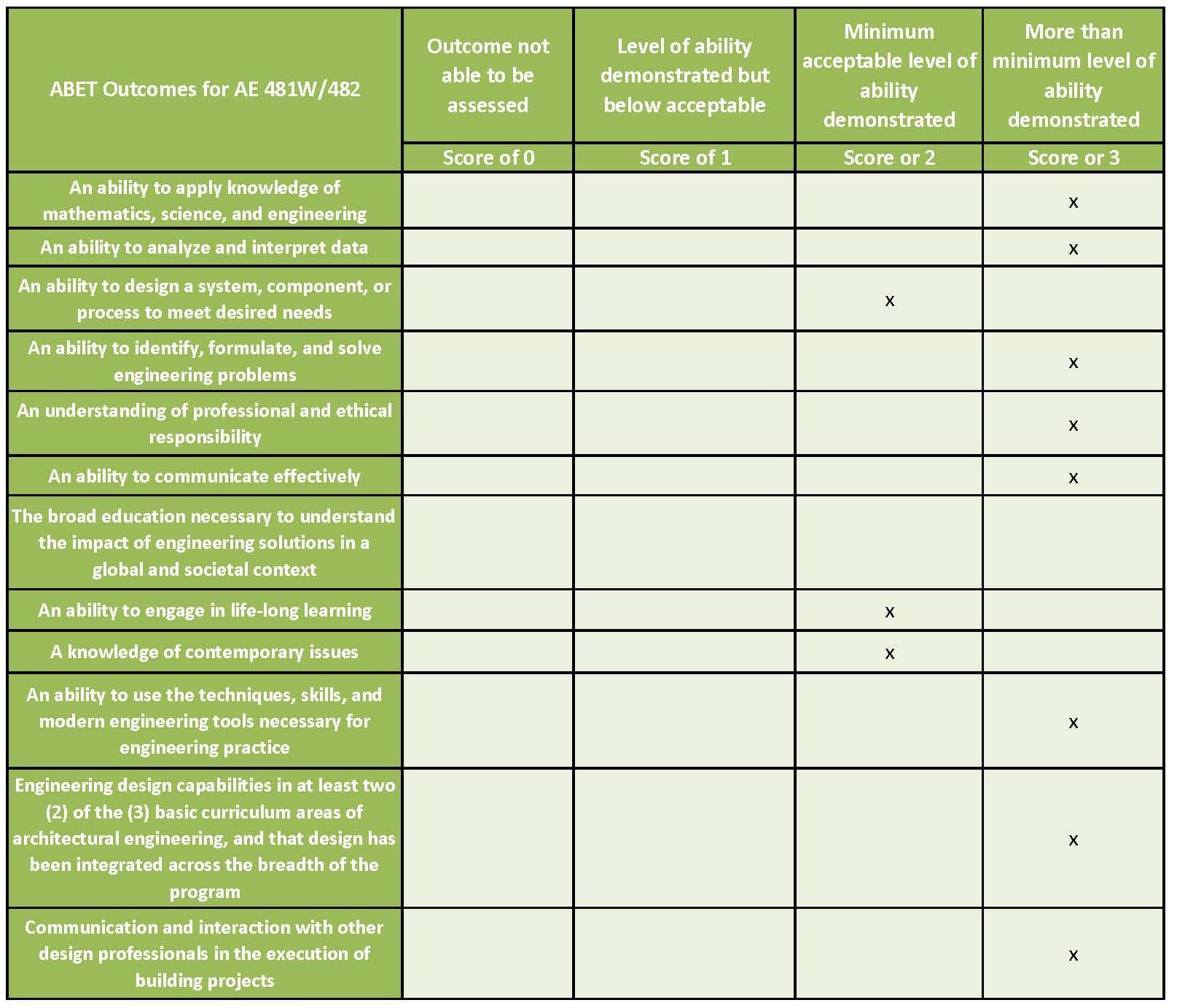Reflection and ABET Outcome Survey
Click image to view full ABET Outcome Survey
Participating in Penn State’s AE BIM/IPD Thesis was a very unique and enjoyable experience. I initially decided to take part in the BIM/IPD Thesis because I believed it was an opportunity to learn about Building Information Modeling, as well as build upon interpersonal skills by working in a group atmosphere. While group members can be beneficial during periods of heavy workloads, they also present many challenges that an individual thesis typically lacks. Obstacles such as developing effective communication within the group, as well as creating an enjoyable and efficient work environment were imperative to solve to have success.
From a technical standpoint, having each discipline represented in the BIM/IPD Thesis groups allowed each of our members to gain a better understanding of how one’s decisions and designs impacts the entire group. Specifically, clash detections literally displayed how disciplines’ designs conflict with one another. Having each discipline represented also allowed each member to be exposed to new and interesting ideas. For instance, taking part in the design of a double-skin façade, a system that, as a Construction Management discipline, I know very little about, was very educational. Understanding another discipline’s design goals and how to achieve them was a very valuable experience as well.
Overall, the BIM/IPD Thesis accomplished exactly what I had hoped. I believe I gained a much better understanding of my partners’ responsibilities, but more importantly I now am more confident in my own field of study. I believe that the BIM/IPD Thesis is a much more realistic simulation of a ‘real world’ work environment and therefore, certainly prepared me more than an individual thesis ever could.
Note: While great efforts have been taken to provide accurate and complete information on the pages of CPEP, please be aware that the information contained herewith is considered a work‐in progress for this thesis project. Modifications and changes related to the original building designs and construction methodologies for this senior thesis project are solely the interpretation of Jonathon Brangan. Changes and discrepancies in no way imply that the original design contained errors or was flawed. Differing assumptions, code references, requirements, and methodologies have been incorporated into this thesis project; therefore, investigation results may vary from the original design.

